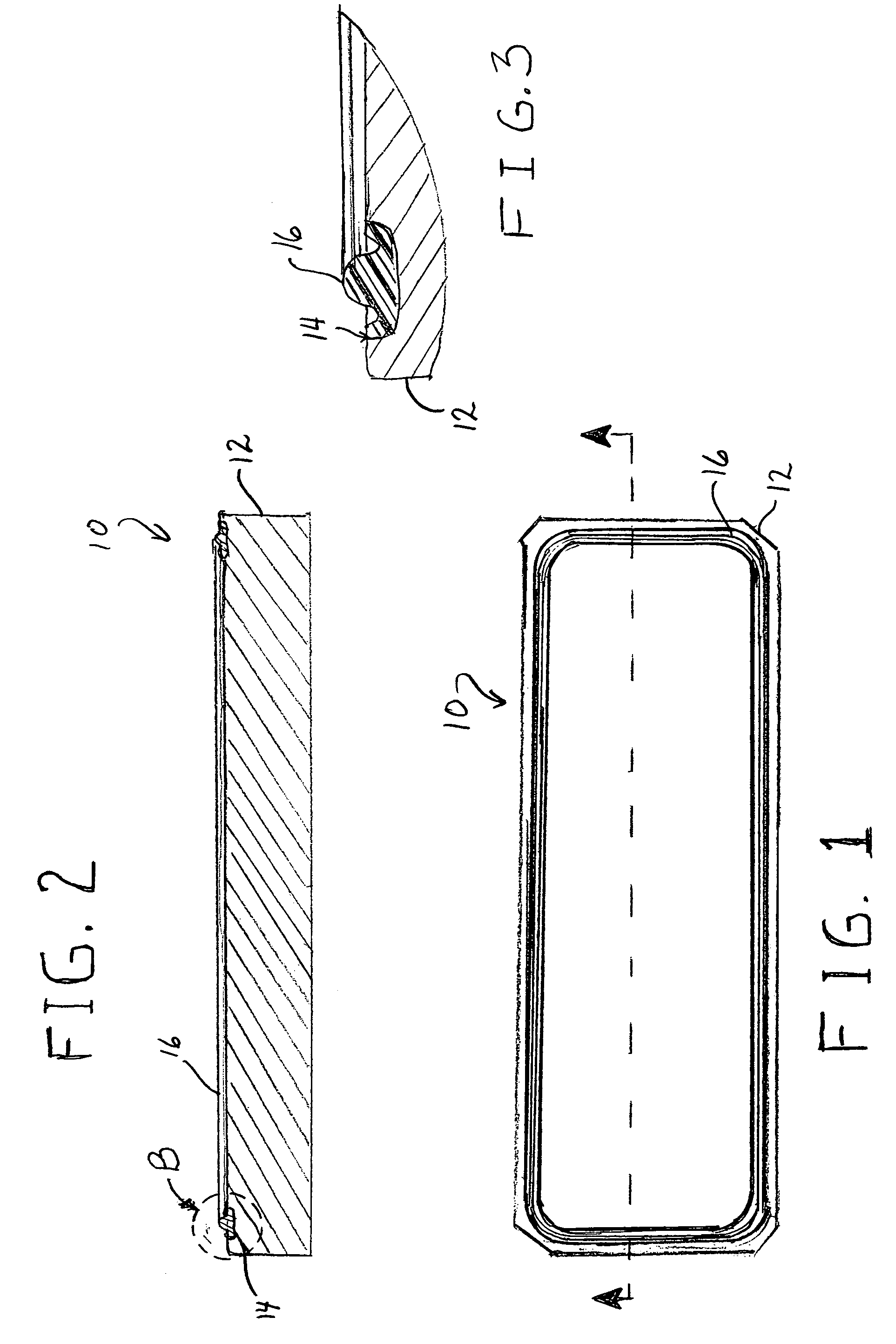Fast curing fluoroelastomeric compositions, adhesive fluoroelastomeric compositions and methods for bonding fluoroelastomeric compositions
a technology of fluoroelastomeric compositions and compositions, applied in the direction of adhesives, etc., can solve the problems of relative slow cure rate, relatively thermal instability, and inability to demonstrate the actual synthesis and use of such compounds as curatives
- Summary
- Abstract
- Description
- Claims
- Application Information
AI Technical Summary
Benefits of technology
Problems solved by technology
Method used
Image
Examples
example 1
[0094]In this example, perfluoroelastomeric compositions were prepared using as a base perfluoroelastomer, tetrapolymers prepared by batchwise polymerization in aqueous emulsion as described in detail in WO 00 / 08076, incorporated herein by reference. The monomers in the terpolymer included tetrafluoroethylene, perfluoromethylvinyl ether and two curesite monomers, a secondary cyano curesite monomer, CF2═CFO(CF2)3OCF(CF3)CN and a primary cyano curesite monomer, CF2═CFOCF2CF(CF3)O(CF2)2CN. Polymerizations were conducted in an aqueous emulsion containing 1,1,2-trichloro-1,2,2-trifluoroethane using ammonium persulfate or ammonium persulfate / sodium sulfite redox initiation. The surfactant mixture included ammonium perfluoroheptanoate and ammonium perfluorononanoate. The buffer used was dipotassium phosphate. Tetrapolymers were isolated by coagulation with magnesium chloride, washed with hot water and alcohol and dried at 60° C. The composition was determined by F19 NMR and elemental analy...
example 2
[0105]The same compositions noted above were further evaluated for bonding strength. The compositions were testing using inserts according to ASTM D429 of aluminum and were tested using an Instron Model 1125 with full load scale of 2000 lbs. The cross head speed was 1 in per min. The testing was conducted at about room temperature (73° F.) and at 20% relative humidity. The compositions were bonded to the inserts with and without use of adhesive. Two inserts were tested for each of Samples 1-4 above and the results are reported below in Table 2.
[0106]
TABLE 2Lbs. Force toSampleInsertExternal Adhesiveseparate disc1Ano705.0Bno837.3Cyes1086.0Dyes1093.02Eno880.8Fno681.1Gyes1327.0Hyes1239.03Ino1752.0Jno1816.0Kyes1087.0Lyes1548.04Mno210.5Nno188.5Oyes285.6Pyes276.8
[0107]The results in Table 2 demonstrate that the use of the colorant alone (Sample 3) without peroxide provided the best overall comparative performance (approximately 35% improved bonding strength over use of an external adhesive...
example 3
[0108]In this Example, additional compositions were prepared (Comparative Sample 5 and Samples 6-9) to illustrate the effects of varying amounts of the colorant in compositions without organic peroxide that incorporate a BOAP curative and a monoamidine cure accelerator (perfluorooctanamidine). The same Polymer A of Example 1 was used in this Example. The BOAP was also the same material as in Example 1. The monoamidine cure accelerator was obtained from SynQuest Laboratories, Inc., Alachua, Fla. The compositions were postcured in nitrogen for 24 hours at 550° F. Curing took place for 5 minutes at 350° F. The results and compositions are shown in Table 3 below, including weight loss of samples when exposed to typical plasma gases encountered in semiconductor manufacturing.
[0109]
TABLE 3SampleComp. 56789Polymer A100100100100100Silica2020202020BOAP11111monoamidine11111Clariant PV Fast Violet—0.51.02.04.0Physical PropertiesTensile18632058189420011887% elongation150155156158134100% modulus...
PUM
 Login to View More
Login to View More Abstract
Description
Claims
Application Information
 Login to View More
Login to View More - R&D
- Intellectual Property
- Life Sciences
- Materials
- Tech Scout
- Unparalleled Data Quality
- Higher Quality Content
- 60% Fewer Hallucinations
Browse by: Latest US Patents, China's latest patents, Technical Efficacy Thesaurus, Application Domain, Technology Topic, Popular Technical Reports.
© 2025 PatSnap. All rights reserved.Legal|Privacy policy|Modern Slavery Act Transparency Statement|Sitemap|About US| Contact US: help@patsnap.com



